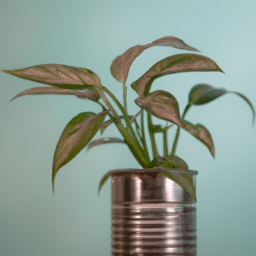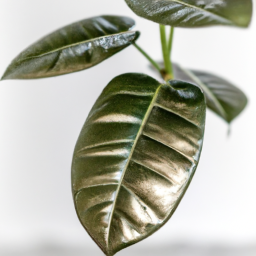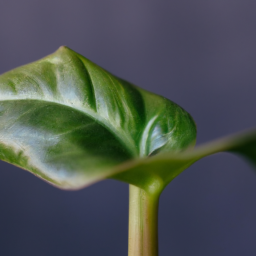
Hey there plant lovers! If you’re like me and have a passion for indoor gardening but lack the ideal amount of sunlight in your home, then you’ve come to the right place. In this blog post, we’ll be exploring the fascinating world of indoor plants that don’t need sunlight. Yes, you heard it right! There are actually several beautiful and vibrant plant species that thrive in low-light conditions, making them perfect for those of us with less sunny spaces. So, if you’re ready to bring some greenery into your life without worrying about finding that perfect sunny spot, let’s dive in and discover which indoor plants don’t need sunlight to flourish.
What Indoor Plants Don’t Need Sunlight
Benefits of Low-Light Indoor Plants
Indoor plants not only add aesthetic value to our homes but also provide numerous health benefits. While most plants require sunlight to thrive, there are some beautiful varieties that can thrive in low-light conditions. These low-light indoor plants are perfect for spaces with limited access to natural light, such as offices or rooms with small windows. Let’s explore the benefits of having low-light indoor plants in your living or working space.
Improving Air Quality
One of the significant benefits of low-light indoor plants is their ability to purify the air we breathe. They act as natural air filters, removing harmful toxins and pollutants from the environment. These plants absorb carbon dioxide and release oxygen during photosynthesis, which enhances the air quality and helps us breathe cleaner air. Some popular low-light indoor plants known for their air-purifying properties include the Snake Plant, Peace Lily, and Boston Fern.
Furthermore, low-light indoor plants also help to increase humidity levels in dry environments. This can be especially beneficial during the winter months when indoor heating systems tend to dry out the air. By releasing moisture into the air through a process called transpiration, these plants can alleviate dry skin, respiratory problems, and allergies.
Moreover, studies have shown that having indoor plants can reduce the presence of volatile organic compounds (VOCs) in the air. These compounds are commonly found in household items like paint, cleaning products, and furniture. By having low-light indoor plants, you can create a healthier and more comfortable living or working environment.
Reducing Stress and Boosting Mood
Another remarkable benefit of low-light indoor plants is their ability to reduce stress levels and boost mood. Being surrounded by nature, even indoors, has a calming effect on our minds and bodies. Research has shown that indoor plants can lower blood pressure, reduce anxiety, and improve overall well-being.
In addition, low-light indoor plants can help to create a more serene and peaceful atmosphere in your home or office. Their green foliage and natural beauty create a sense of tranquility and can act as a visual escape from the hustle and bustle of daily life. Whether it’s a small desk plant or a larger floor plant, having low-light indoor plants can significantly improve your mental and emotional state.
Furthermore, taking care of indoor plants can be a therapeutic activity in itself. The act of nurturing and watching them grow can provide a sense of accomplishment and purpose. It also encourages mindfulness and helps to establish a connection with nature, even in an urban setting.
Easy Maintenance and Versatility
One of the main advantages of low-light indoor plants is their easy maintenance. Unlike plants that require direct sunlight, these varieties can thrive in low-light conditions and are generally more forgiving when it comes to watering and care. This makes them perfect for those who have busy schedules or lack a green thumb.
Low-light indoor plants come in various shapes, sizes, and textures, offering a wide range of options to suit your personal style and preferences. Whether you prefer trailing vines, leafy foliage, or compact plants, there is a low-light variety that will complement your space perfectly. Some popular low-light indoor plants include the Spider Plant, ZZ Plant, and Pothos.
Additionally, many low-light indoor plants are known for their ability to adapt to different environments. They can tolerate fluctuations in temperature and humidity, making them versatile choices for various rooms in your home or office. With proper care and attention, these plants can thrive and bring life to even the darkest corners of your space.
In conclusion, low-light indoor plants offer numerous benefits, including improved air quality, stress reduction, and easy maintenance. They are a great choice for anyone looking to bring nature indoors and enhance their living or working environment. Consider adding some low-light indoor plants to your space and experience the positive impact they can have on your well-being.

What Indoor Plants Don’t Need Sunlight
Welcome to our guide on indoor plants that don’t need sunlight! If you’re looking to add some greenery to your home or office but don’t have access to direct sunlight, don’t worry. There are several popular indoor plants that thrive in low-light conditions. In this article, we will discuss these plants and provide you with a step-by-step guide on how to care for them.
Popular Indoor Plants That Thrive in Low-Light Conditions
When it comes to indoor plants that don’t need sunlight, there are a few popular options that are known for their ability to thrive in low-light environments. Let’s take a closer look at some of these plants:
1. Snake Plant (Sansevieria Trifasciata)
The snake plant, also known as mother-in-law’s tongue, is a popular choice for low-light conditions. It has long, upright leaves that are dark green with yellow edges, giving it an attractive appearance. This plant is not only easy to care for but also helps purify the air by removing toxins.
When growing a snake plant in low-light conditions, it’s important to place it near a window where it can receive indirect sunlight. However, it can also tolerate artificial light sources, making it an ideal choice for rooms with limited natural light.
To care for a snake plant, water it sparingly as it prefers dry conditions. Allow the soil to dry out between waterings to prevent root rot. This plant can survive in a wide range of temperatures, making it suitable for various indoor environments.
2. ZZ Plant (Zamioculcas Zamiifolia)
The ZZ plant is another excellent option for low-light conditions. It features glossy, dark green leaves that add a touch of elegance to any space. This plant is known for its ability to tolerate neglect and is perfect for beginners or those with a busy lifestyle.
ZZ plants can thrive in low to moderate light but can also adapt to brighter conditions. They are highly drought-tolerant and prefer to be underwatered rather than overwatered. Allow the soil to dry out completely between waterings and avoid standing water, as it can lead to root rot.
These plants are native to Africa and can handle a wide range of temperatures, making them suitable for most indoor environments. Keep in mind that ZZ plants are toxic if ingested, so it’s important to keep them away from children and pets.
3. Pothos (Epipremnum Aureum)
Pothos, also known as devil’s ivy, is a popular trailing plant that is perfect for low-light conditions. It has heart-shaped leaves that come in various shades of green, making it a visually appealing choice for any space.
When it comes to lighting, pothos can tolerate low to bright indirect light. However, it’s important to avoid direct sunlight as it can scorch the leaves. This plant is also known for its air-purifying qualities, making it a great addition to any indoor environment.
Pothos plants are relatively easy to care for. Water them when the top inch of soil feels dry, and make sure to drain any excess water from the pot to prevent root rot. These plants can thrive in a wide range of temperatures and are perfect for beginners or those with a busy schedule.
These are just a few examples of indoor plants that don’t need sunlight. There are many other options available, each with its own unique characteristics and care requirements. When choosing a plant, consider the lighting conditions in your space and the level of care you are willing to provide.
Remember, even though these plants can survive in low-light conditions, they still require some light to thrive. Make sure to provide them with indirect sunlight or artificial light sources to ensure their optimal growth.
We hope this guide has been helpful in finding the perfect indoor plants for your low-light environment. Enjoy the beauty and benefits of greenery in your space, even without direct sunlight!

How to Care for Indoor Plants That Don’t Require Sunlight
Introduction
Indoor plants are a great way to bring life and beauty into your home or office. However, not all indoor plants thrive in low-light conditions. If you have a space that doesn’t receive much sunlight, don’t worry! There are plenty of plants that can still thrive in these conditions. In this article, we will explore the best practices for caring for indoor plants that don’t require sunlight, ensuring they stay healthy and vibrant.
Understanding Low-Light Conditions
Before we dive into the specific plants that don’t need sunlight, it’s important to understand what constitutes low-light conditions. Low-light environments are typically areas that receive less than four hours of direct sunlight per day. These spaces can include rooms with small windows, areas far from windows, or rooms with north-facing windows.
While it may seem challenging to find plants that can survive in such conditions, nature has provided us with many options. These plants have adapted to thrive in the understory of forests, where they receive filtered or indirect light. Let’s explore some of these low-light champions!
Snake Plant (Sansevieria)
The Snake Plant, also known as Sansevieria or Mother-in-Law’s Tongue, is an excellent choice for low-light environments. It is a hardy plant that can tolerate a wide range of light conditions, including low light. The Snake Plant has long, upright leaves that are green with yellow edges, giving it a unique and striking appearance.
To care for a Snake Plant, place it in a location where it can receive indirect or filtered light. Avoid placing it in direct sunlight as it can scorch the leaves. Water the plant sparingly, allowing the soil to dry out between waterings. Snake Plants are known for their ability to purify the air, making them an ideal choice for bedrooms or offices.
Another advantage of the Snake Plant is its ability to withstand neglect. It can tolerate irregular watering and can go for extended periods without water. This makes it an excellent choice for busy individuals or those new to plant care.
ZZ Plant (Zamioculcas zamiifolia)
The ZZ Plant is another popular choice for low-light conditions. It is a tropical plant native to Eastern Africa and features glossy, dark green leaves that add a touch of elegance to any space. The ZZ Plant is known for its ability to survive in almost any lighting condition, including low light.
To care for a ZZ Plant, place it in an area with indirect or low light. It can tolerate brighter light, but direct sunlight should be avoided as it can scorch the leaves. Water the plant when the top inch of soil feels dry, and be cautious not to overwater as this can lead to root rot. The ZZ Plant is a slow grower, so it requires minimal pruning and maintenance.
One of the ZZ Plant’s unique characteristics is its ability to store water in its rhizomes, making it highly tolerant of drought. This feature makes it an excellent choice for forgetful or busy plant owners who may occasionally forget to water their plants.
Cast Iron Plant (Aspidistra elatior)
The Cast Iron Plant is aptly named for its incredible resilience and ability to withstand neglect. Native to Japan and Taiwan, this plant is a true survivor, thriving in low-light conditions where other plants struggle. It features dark green, leathery leaves that add a touch of lushness to any room.
When caring for a Cast Iron Plant, place it in an area with indirect or low light. It can tolerate brighter light, but direct sunlight should be avoided. Water the plant when the top inch of soil feels dry, but be careful not to overwater. The Cast Iron Plant is highly drought-tolerant and can withstand long periods of dryness.
One of the Cast Iron Plant’s most remarkable features is its ability to survive in a wide range of temperatures. It can tolerate both hot and cold conditions, making it an excellent choice for spaces with fluctuating temperatures, such as entryways or rooms without central heating or cooling.
Conclusion
Caring for indoor plants that don’t require sunlight can be a rewarding experience. By choosing the right plants and providing them with the proper care, you can create a lush and vibrant indoor garden, even in low-light conditions. Remember to place your plants in areas with indirect or filtered light, avoid overwatering, and choose plants that are known for their ability to thrive in low-light environments.
Whether you opt for the striking Snake Plant, the elegant ZZ Plant, or the resilient Cast Iron Plant, these low-light champions will bring beauty and life to your indoor spaces. Enjoy the benefits of indoor gardening and reap the rewards of a greener, healthier home or office environment!
I’ll leave you with these final thoughts
Indoor plants are a great way to bring life and freshness to any space, but what if your home or office doesn’t receive much sunlight? Don’t worry, there are plenty of plants that can thrive in low-light conditions. In this blog post, we’ll explore some popular indoor plants that don’t need direct sunlight to grow and flourish.
One such plant is the snake plant, also known as mother-in-law’s tongue. This hardy plant is perfect for those with a black thumb as it can survive in almost any lighting condition, including low light. Snake plants have beautiful, long leaves that come in various shades of green, making them a stylish addition to any room. Another low-light champion is the pothos plant. This versatile plant can tolerate a wide range of lighting conditions, including low to moderate light. Pothos plants have heart-shaped leaves that come in a variety of colors, including green and variegated shades. They are also known for their ability to purify the air, making them an excellent choice for offices or bedrooms. So, if you’re looking to add some greenery to your space but lack natural sunlight, consider these low-light-loving plants that will thrive in your home or office.
Your Burning Questions Answered:
Q1: What are some indoor plants that don’t need sunlight?
A1: There are several indoor plants that can thrive in low-light conditions and don’t require direct sunlight. Some popular options include the snake plant (Sansevieria), ZZ plant (Zamioculcas zamiifolia), pothos (Epipremnum aureum), and peace lily (Spathiphyllum). These plants have adapted to survive in shaded areas and can still thrive indoors without direct sunlight.
Q2: How do indoor plants survive without sunlight?
A2: Indoor plants that don’t need sunlight have evolved to survive in low-light conditions by adapting their physiology. They have developed the ability to photosynthesize efficiently even with limited light. These plants have larger and broader leaves to maximize light absorption, while some can also store energy for longer periods. Additionally, they can tolerate lower light levels by slowing down their growth rate and reducing their metabolic activities.
Q3: Can indoor plants survive solely on artificial light?
A3: Yes, many indoor plants can survive and thrive solely on artificial light. However, it’s important to ensure that the artificial light source provides the right spectrum and intensity for photosynthesis. LED grow lights are a popular choice as they emit the necessary wavelengths of light for plant growth. It’s crucial to position the lights correctly and adjust the duration of light exposure to mimic natural day-night cycles for optimal plant health.
Q4: How often should I water indoor plants that don’t need sunlight?
A4: The watering needs of indoor plants that don’t require sunlight vary depending on factors such as the plant species, pot size, and environmental conditions. It’s essential to avoid overwatering, as this can lead to root rot. Generally, it’s best to allow the top inch or two of soil to dry out before watering again. Regularly check the moisture level by inserting your finger into the soil. If it feels dry, it’s time to water, but if it’s still slightly moist, hold off for a few more days.
Q5: Are there any other care tips for indoor plants that don’t need sunlight?
A5: Along with proper watering, there are a few care tips to keep in mind for indoor plants that don’t require sunlight. Firstly, ensure good drainage by using pots with drainage holes and well-draining potting soil. Avoid placing the plants near cold drafts or heating vents, as extreme temperature fluctuations can stress them. Additionally, periodically wipe the leaves with a damp cloth to remove dust and enhance their ability to absorb light. Lastly, regularly inspect the plants for any signs of pests or diseases and take appropriate measures to address them promptly.
Dr. Olivia Green is a botanist with over two decades of experience in indoor plant cultivation. She holds a Ph.D. in Plant Biology and has dedicated her career to researching plant behavior in controlled environments. Dr. Green is passionate about helping plant enthusiasts master the art of indoor gardening through her extensive knowledge and practical insights.


